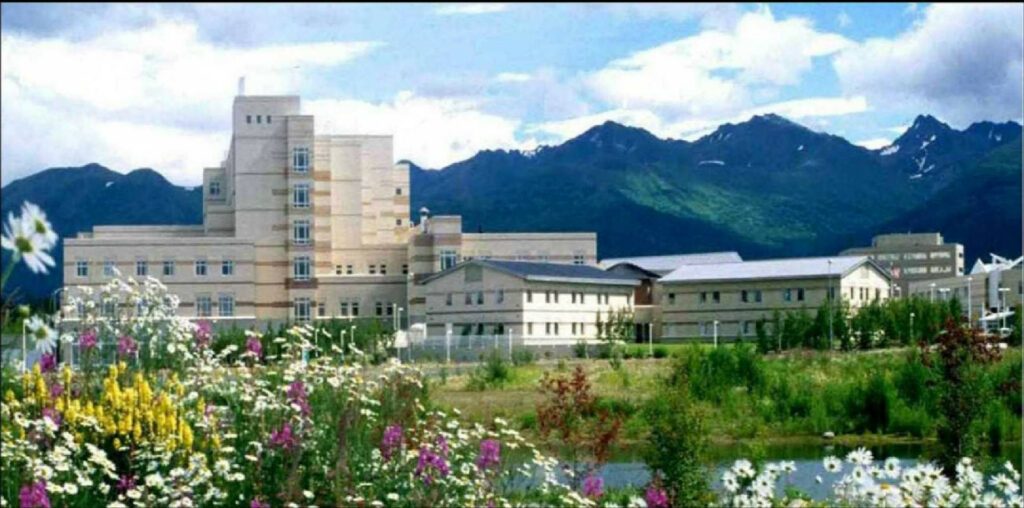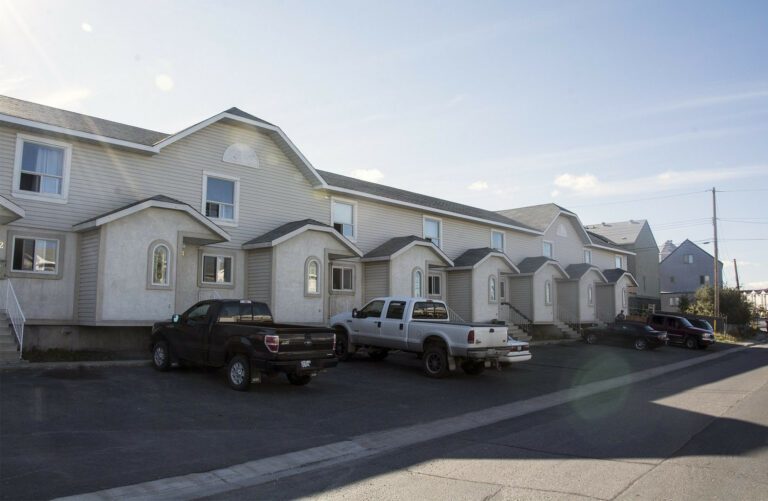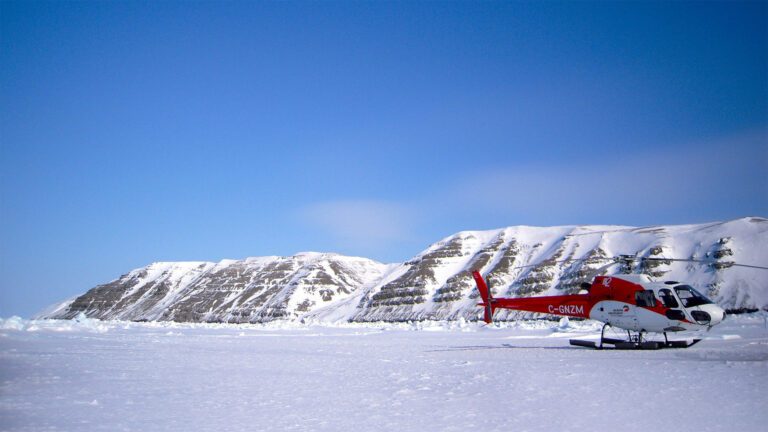Imagine a hospital meal that includes caribou meat, a pharmacy dispensing medicines from the land, and traditional healing practitioners addressing not just your physical and mental health, but emotional and spiritual health as well.
For the better part of a decade, that’s exactly what the NWT’s Elders Wellness Advisory Council has been advocating for; more “culturally competent” care at Stanton Territorial Hospital in Yellowknife, through the creation of an on-site Indigenous wellness centre.
While Stanton is working to offer services in all of the territory’s Indigenous languages, the council believes more needs to be done to improve care for patients traveling to Yellowknife from remote communities.
“Right now, language is part of Stanton Hospital, which is wonderful. But this hospital cannot accommodate other cultural components of ceremonies and food and all that,” says Francois Paulette, council chair. “So maybe six years ago, the Elders started to talk about a wellness centre, because we heard that they were going to begin to renovate the existing hospital, and the Elders wanted to have a wellness centre alongside of that.”
Three years ago, the department of Health committed land for the project, and since then the Elders Council has been working in partnership with the Institute of Circumpolar Health Research on a needs assessment that lays out the plan for the centre, including building design and funding sources.
You can’t cook a caribou head in a hospital
The wellness centre would serve as a separate but complementary care centre for patients, offering traditional foods, medicines, cultural practices like smudging and feeding the fire ceremonies, and a space for family to stay while their loved ones are in care.
Paulette sees the wellness centre also providing culturally appropriate counselling, addictions treatment and even palliative care or midwifery.
“It’s a simple concept,” Paulette says. “You have a traditional wellness centre that will cater to First Nations, Inuit and Metis that go to the hospital. If you want to have translators or interpreters, you have that; if you want to cook your own food — because you can’t cook a caribou head in a hospital — you can cook your own food the way you want to.”
But distinct from a community or friendship centre, Paulette sees the wellness centre also providing culturally appropriate counselling, addictions treatment and even palliative care or midwifery.
“It would be a multi-purpose building,” he says, “so the people who come there are looked after; they feel at home.”
The proposal is not a new concept, says Paulette, who has visited similar facilities across the country and in the U.S. The UN Declaration on the Rights of Indigenous Peoples has long held provisions for traditional medicines, but recent recommendations in the Truth and Reconciliation Commission’s final report add force to the push for Indigenous healing centres, especially in the North.
“This wellness centre is not a new idea; it’s been around for a long time,” Paulette says. “Today, Western medicine and traditional medicine, they’re always asking to work in partnership.”
Learning from Yukon, Alaska
The First Nations Health Program linked to Whitehorse’s General Hospital and Watson Lake’s Community Hospital gives First Nations, Metis and Inuit patients access to traditional healing practices integrated alongside Western healthcare in the Yukon.
While the meat comes from local hunters, outfitters and conservation officers, patients have the ability to assist in gathering traditional medicines from the land and knowledge about medicines from Elders.
There, liaison workers with special training work directly with Indigenous patients to coordinate treatment, offer culturally relevant support and advocacy, and arrange for traditional foods and medicines, with the recognition that creating a “comforting, healing and familiar environment” is crucial to care.
While the meat comes from local hunters, outfitters and conservation officers, patients have the ability to assist in gathering traditional medicines from the land and knowledge about medicines from Elders.
Over in Alaska, the Indigenous health system is even more refined. The Alaska Native Medical Centre in Anchorage is fully owned and operated by tribal governments and has specifically designed all of its care — from cancer treatment to obstetrics to addictions treatment — to meet the needs of Alaska’s Indigenous population in 55 communities across the state.
Stanton’s Elders Council, along with several MLAs and Health Minister Glen Abernethy, visited the hospital on a fact-finding mission in 2014 to learn more about how it operates and what it offers.
“That hospital is owned by the First Nations. They have everything that is like a hospital, from emergency to surgery to midwifery, but they also have traditional medicines and ceremonies,” Paulette says.
A key element of the hospital is a traditional healing clinic. There, tribal doctors offer culturally sensitive counselling and storytelling, healing hands and massage, cleansing, talking circles, prayer, song, dance, consultation with Elders and a traditional healing garden from which medicines are gathered and administered.
The hospital also offers an array of culturally competent health programming, like the Native Men’s Wellness Program, which assists men in identifying their traditional and contemporary roles within the community; in finding vocational and employment opportunities and counselling; in improving their health and wellness; and in connecting culturally.
Other programs include the Family Wellness Warriors Initiative, which combats family violence, abuse and neglect, and the Elder Program, which fosters independence and dignity among Alaska’s aging population through hot lunches, home care, transportation and regular outings that include berry picking, beading, sewing, fiddle dances and other social events.
Funding, ownership and location
Paulette says a facility in the Northwest Territories should operate using federal funding for First Nations presently administered to the GNWT for health.
“In the south, this federal funding goes straight to the reserves, but here it goes to the territorial government,” he says. “In some ways, the Elders Council, we are constantly reminding the department of Health that with those funds — treaty First Nations funding — they need to consult the chiefs, because it’s their money.”
That’s how the First Nations Health Program was established in the Yukon, when health authority was devolved to the territorial government in the 1990s. The Council of Yukon First Nations (CYFN) developed an agreement with the Yukon Hospital Corp. and Yukon Government to negotiate for the traditional wellness program in the transfer. A First Nations Health Committee was established to oversee the program, with members appointed by the CYFN, representing Yukon’s 14 First Nations.
While the GNWT identified land next to Stanton for the wellness centre, it has thus far committed no funding for the construction or operation of the facility. But recent miscommunications over the construction of an entirely new hospital has the Elders Council concerned the wellness centre might no longer be in the cards.
According to Paulette, the land the new hospital is to be built on is the same area supposedly put aside for the wellness centre.
“I went to Yellowknife in October and was shocked; here, where this land was identified, was totally fenced off and this beautiful piece of real estate, they cut all the trees down and flattened it. They were exploding the rocks, dynamiting that whole place,” he says. “I thought, that’s where our wellness centre was going to go. No one told me they were going to do this, build a new hospital there; I only read that in the news.”
Though Stanton officials have said there’s still space for a wellness centre on the site, Paulette says the Elders Council has yet to be formally briefed on the current plans.
Even if the current plans don’t work out, Paulette says it’s entirely possible for Indigenous governments in the NWT to take it upon themselves to establish their own health care system.
In Alaska, the Native Tribal Health Consortium and the native-owned, non-profit Southcentral Foundation attained ownership of the hospital from the US government in 1998. Unlike other hospitals, patients are actually part owners of the facility and therefore in charge of designing and delivering health care.
With a resolution in favour of having the wellness centre passed by chiefs at the last Dene National Assembly, Paulette says full First-Nations ownership of the NWT centre is entirely possible, but will take the concentrated effort of leaders in the territory to make that dream a reality.
“Anything is possible,” he says, “but the chiefs need to be more proactive.”







